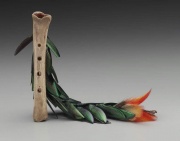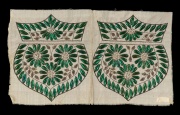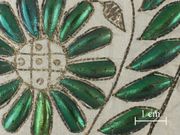Difference between revisions of "Beetle elytra"
Jump to navigation
Jump to search
| Line 15: | Line 15: | ||
== Sources Checked for Data in Record == | == Sources Checked for Data in Record == | ||
| − | * Victoria Rivers, 'Beetles in Textiles" BugBios, Issue 2, February 1994 [ | + | * Victoria Rivers, 'Beetles in Textiles" BugBios, Issue 2, February 1994 [https://legacy-insects.orkin.com/ced/issue-2/beetles-in-textiles/ LINK] |
* ''The American Heritage Dictionary'' or ''Encarta'', via Microsoft Bookshelf 98, Microsoft Corp., 1998 | * ''The American Heritage Dictionary'' or ''Encarta'', via Microsoft Bookshelf 98, Microsoft Corp., 1998 | ||
Latest revision as of 13:10, 2 May 2022
Description
The hard exoskeleton composed of Chitin that covers the wings of a beetle (Coleopter). Elytra provide protection from heat, wind, and moisture evaporation allowing beetles to live in adverse conditions, such as a desert environment. Beetles typically have two wings folded under a pair of elytra that meet in the center of the back and usually extend to the tip of the abdomen. Beetle elytra are often have bright jewel-tone colors. Many also have an iridescence due to the interference of light between the multiple layers of chitin.
Synonyms and Related Terms
beetle wing; elytron (singular)
Additional Images
Sources Checked for Data in Record
- Victoria Rivers, 'Beetles in Textiles" BugBios, Issue 2, February 1994 LINK
- The American Heritage Dictionary or Encarta, via Microsoft Bookshelf 98, Microsoft Corp., 1998
- Encyclopedia Britannica, https://www.britannica.com/topic/Britannica-Online Comment: Dermestid beetle. Retrieved May 29, 2003,.
- Lynda A. Zycherman, J.Richard Schrock, A Guide to Museum Pest Control, FAIC and Association of Systematics Collections, Washington DC, 1988
- Hermann Kuhn, Conservation and Restoration of Works of Art and Antiquities, Butterworths, London, 1986



